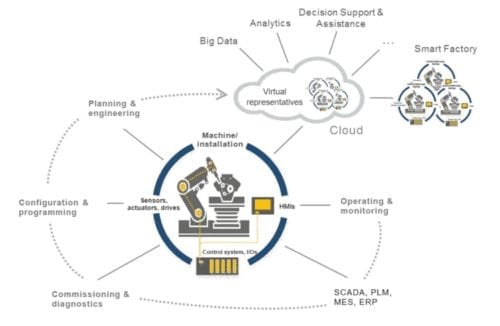
FDT is the established, open standard, built to integrate and automate the ecosystem exchange of industrial automation – standards, protocols, systems, devices, data exchanges, services, and more. Technical work with the standard surrounding the Industrial Internet of Things (IIoT) is currently in full swing to enable a complete IIoT architecture known as FDT IIoT Server (FITS™).
This article will focus on a topic not typically covered in IIoT discussions; an area FDT was founded on, and the heartbeat of all industrial applications – lifecycle management, including engineering, configuration and diagnostics. What will the future of lifecycle management look like within an IIoT cloud-based concept with FDT Technology?
The Industrial Internet is emerging as the next technology mega-trend, with repercussions across the business spectrum. It promises to open up a host of new opportunities and challenges for companies, governments, and consumers.
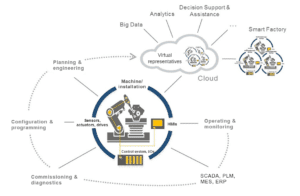
Figure 1: Industrial Internet of Things
But what does the term “Internet of Things (IoT)” actually mean?
The basic idea behind IoT revolves around embedded microprocessors enabling physical objects to interact with the outside world via the Internet. The objects then have virtual online representatives, via which they communicate with their manufacturer, users and other objects.
With the industrial version of IoT, “things” are often machines and installations with, for example, local control systems, intelligent sensors and actuators used to control a physical process (See Fig. 1).
The ability to access all information is an important aspect when operating modern industrial installations. Typical buzzwords here include big data, analytics, decision support and assistance systems, all the way up to smart factories.
Operational management and maintenance tasks, which are essential to all industrial installations for access to asset information, are generally not discussed within the context of the IIoT, including:
- Planning, configuration, programming, commissioning and diagnostics
- Local operations and monitoring
- Tasks of SCADA, PLM, MES and ERP systems
Currently, these tasks are largely performed at the local level of the topology. The corresponding software tools are connected to the machine or installation either directly or via a local network. However, looking to the future, the job duties for these important operational tasks are forecasted for the cloud, or at least partly in the cloud.
FDT today heavily addresses key industrial lifecycle functions. The following section explains how the technology is positioned to handle these same functions in an IIoT environment.
How the technology works with IIoT
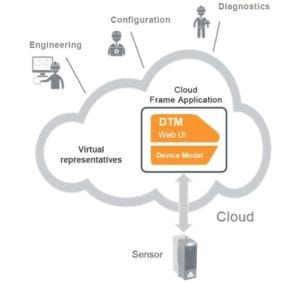
Figure 2: DTM execution in the cloud
IIoT services typically run in the cloud and interact with physical things via virtual representatives. Device Type Managers™ (DTMs™) are virtual representatives for physical devices that are executed on a PC, but can also be executed in the cloud. For execution in the cloud, a cloud-based interface application such as one based on the Microsoft Azure platform is required. With FDT, the same scenerio applies: A cloud-based FRAME Application™ system would support IIoT services for system engineering, configuration and diagnostics with DTM software interfaces virtually representing the sensor-based physical devices (See Fig. 2).
For DTM user interfaces to be used in a cloud environment, they must be web-capable. Work is currently in progress through the FDT Group mobility technical working group to establish DTM web interfaces based on the current version of the FDT standard (2.0).
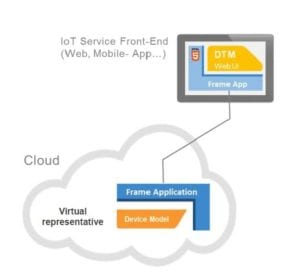
Figure 3: DTM user interface/device model.
The specifications to support a cloud-based FRAME Application interface with server and client components exist today with the recent release of the FDT/OPC UA information-modelling annex. This allows FRAME Applications to become an all-in-one client/server interface employing the current FDT standard. When web interfaces become available for DTMs, the DTM device model will be executed on the server, while the DTM user interface will be executed on the client (See Fig. 3).
DTM provision and installation
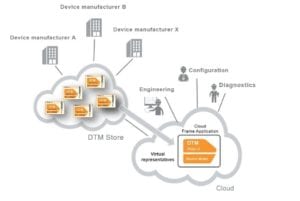
Figure 4: DTM provision and installation
The provision and installation of DTMs in IIoT environments must run transparently for the user. The easiest approach is when the required DTMs are automatically loaded from a kind of store as and when required (See Fig. 4).
The concept of loading DTM set-up programs automatically and executing the installation in the background is an advantage of a DTM. The M&M Software diSTORE makes this concept available as a cloud service and can be used by device manufacturers wishing to make their DTMs available centrally. The diSTORE also offers a REST (representational state transfer) interface for integration into various software tools and other cloud services.
Communication with physical devices
Many types of devices in the future will be capable of sending and receiving data directly via the Internet. An article published in the FDT Device Integration Strategies Newsletter in Nov., 2016, entitled “Seamless Data Exchange Across All Network Layers and Protocols”, addressed this topic in detail.
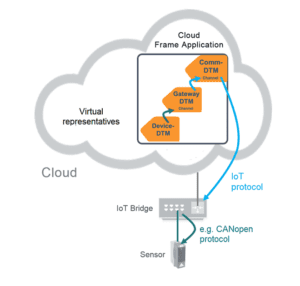
Figure 5: Hierarchical communication with device
To enable seamless device communications in an FDT IIoT-enabled application environment with a FRAME and DTM, a special DTM component known as a Communication DTM (Comm DTM) is used to support the respective IoT protocol used by the device (typical IoT protocols include AMQP and DDS, and with Industry 4.0, there is even consideration of using tunnelling of OPC UA via AMQP). The device DTM uses the services of the Comm DTM to exchange data with the device.
The Comm DTM manages the connection to the device (i.e., how it is linked to the cloud and/or the connection is secured). A Comm DTM of this kind is typically an integral part of the cloud-based FRAME Application, as these functions are strongly linked to other application functions, such as user and authorization management.
As more devices connect directly to the Internet, it seems likely that special IIoT data collectors or bridges will be used. These components will link the sensors/actuators connected via classic industrial networks with the cloud. Within an FDT IIoT environment, Gateway DTMs act as virtual representatives for the data collectors or bridges and corresponding communication services
Interaction with other IoT services
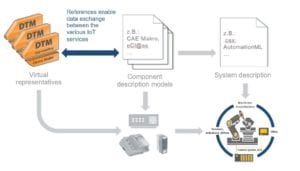
Figure 6: DTM references to other descriptive models
Other IoT services use descriptive models for tasks such as planning or simulating a system (keyword: Digital Factory). For an FDT service to interact meaningfully with other services, references are required between the descriptive models and DTMs, which refer to the same devices (See Fig. 6).
The descriptive models are used in Computer Aided Engineering (CAE) tools to plan the mechanical and electrical design of a machine or installation. Ideally, these tools should also get their descriptive models automatically from a central store – and thereby offer complete transparency for the user.
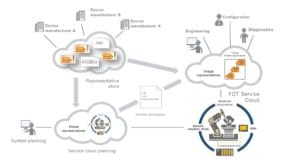
Figure 7: Data exchange with other IoT services.
The mechanical/electrical system description generated in the CAE tools can be forwarded to the FDT service cloud via standardized descriptive models (e.g., AutomationML). This information is then provided to load corresponding DTMs automatically from the store and use them for the engineering, configuration and diagnostics of the automation solution (PLCs, sensors/actuators, drives, HMIs, etc.) (See Fig. 7).
Conclusion
For various safety reasons, working from the cloud will only be permitted for certain applications or not at all, even if it were quite possible from a technical perspective. Aside from this, there will certainly always be cases where no Internet connection is available, although this is less likely to be an issue in the future.
The FDT concepts presented in the article operate both locally and in the cloud, and can be combined in any configuration. DTMs are not only suitable for use in local software tools, but also in the cloud. Local tools can be synchronized with the cloud – for example, if the user is currently in the office and has an Internet connection.
The fact that non-Internet-capable devices can be mapped via DTMs in an IIoT system is a major advantage of the FDT concept, while addressing the applications that are typically not handled on IoT platforms, and therefore already deliver most of what is required for systems engineering, configuration or diagnostics. FDT Group Technical Working Groups are in full force implementing the following extensions to the standard that will be required to implement FDT IIoT-enabled, manufacturer-independent solutions:
- Web-capable DTM user interfaces
- Support of IoT protocols
- Reference to other descriptive models (e.g., eCl@ass, AutomationML)
The FDT FITS solution will be the comprehensive, open architecture to empower the intelligent enterprise.